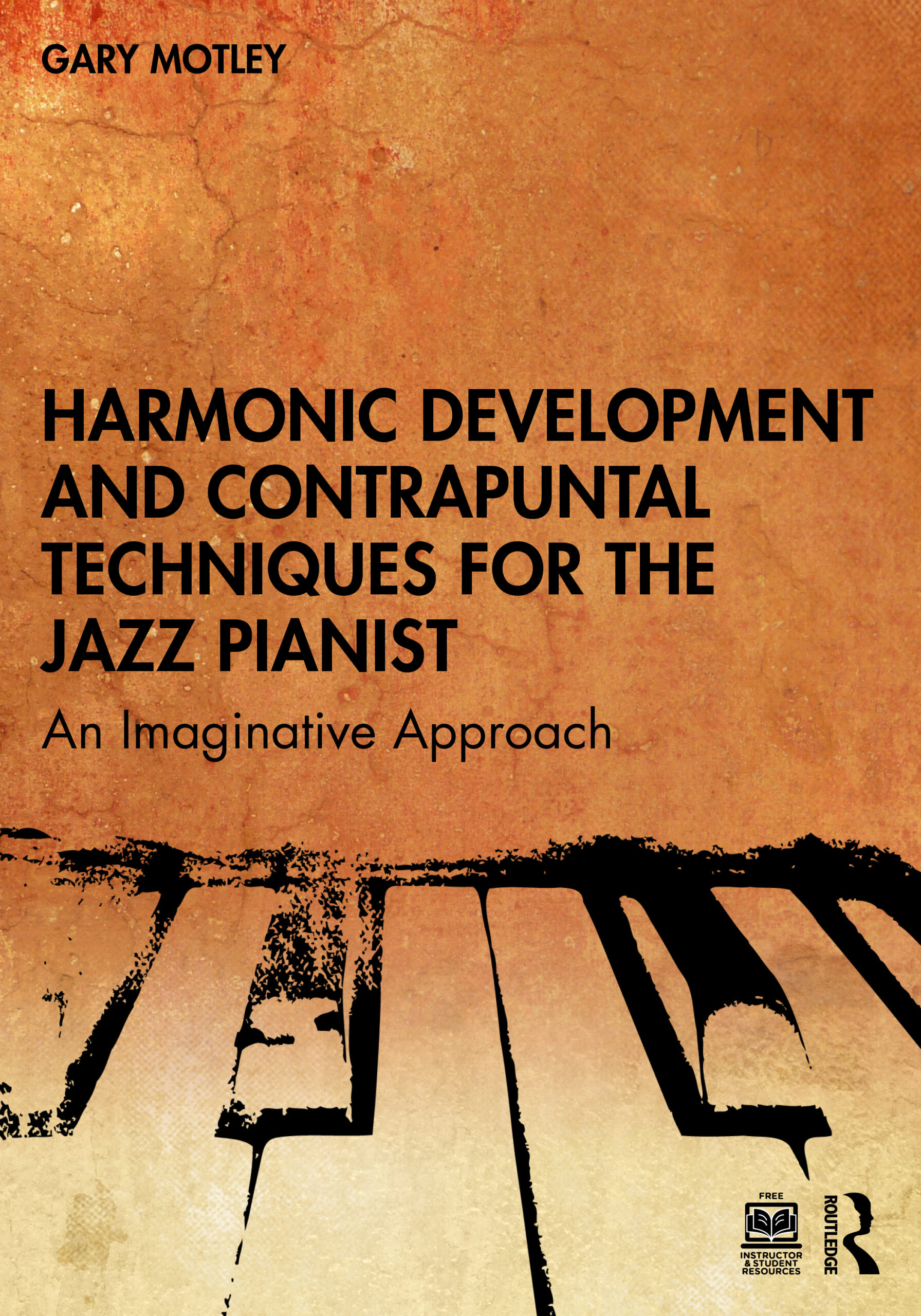Harmonic development
& contrapuntal techniques
for the jazz pianist
Harmonic development
& contrapuntal techniques
for the jazz pianist
an imaginative approach
Harmonic Development and Contrapuntal Techniques
for the Jazz Pianist:
An Imaginative Approach
by Gary Motley

Harmonic Development and Contrapuntal Techniques
for the Jazz Pianist:
An Imaginative Approach
by Gary Motley

Website Features
This companion website is designed to immerse the learner in harmonic counterpoint from theory to performance. Engaging activities and exercises include:
- Performance exercises
- Listening exercises
- Writing assignments
- Audio MP3 examples by chapter
- Video examples
- Suggested listening
Performance Exercises
Performance exercises should be practiced in all keys to develop skill and familiarity. Learners are encouraged to create skill exercises and practice these in all keys.
Listening Exercises
Listening exercises provide insights into the styles of various artists. Stylistic elements include feel, articulation, touch, melodic and harmonic choices, contrapuntal techniques, etc.
Writing Exercises
Writing exercises encourage the learner to annotate what they hear. This will lead to improved transcription skills. Written exercises should also be played, sung, and transposed.
Audio MP3 Examples by Chapter
MP3 audio files demonstrate articulation, feel, style, phrasing, dynamics, etc. Students are encouraged to listen and play along with the audio examples.
Video Examples
Short video presentations demonstrate the use of concepts and how to apply them to jazz tunes.
For the Student
This book and companion website are about playing jazz piano. These tools train your ear to hear inner voice harmony’s intricacies and provide your hands with a consistent, working command of contrapuntal voicing. The key to success is practice and memorization. Daily practice routines should include learning jazz chord voicings, progressions, scales, modes, and rhythms. Vocabulary provides the tools needed to play with other musicians. Learning traditional jazz songs is critical to growth and development. Students are encouraged to experiment with the musical examples in different keys, tempos, and time signatures.
For the Professor
This book and companion website aims to introduce contrapuntal harmony to jazz piano students. Encourage your students to learn jazz standards and apply these techniques to standard chord progressions. Other instrumentalists can also use the methodology for harmonic instruments like guitar and vibraphone. It is also a great way to introduce multiple voice improvisation and arranging to small ensembles through harmonic development using guide tones and color tones. Instrumental setting examples are included, as multiple wind instruments can play many of these.